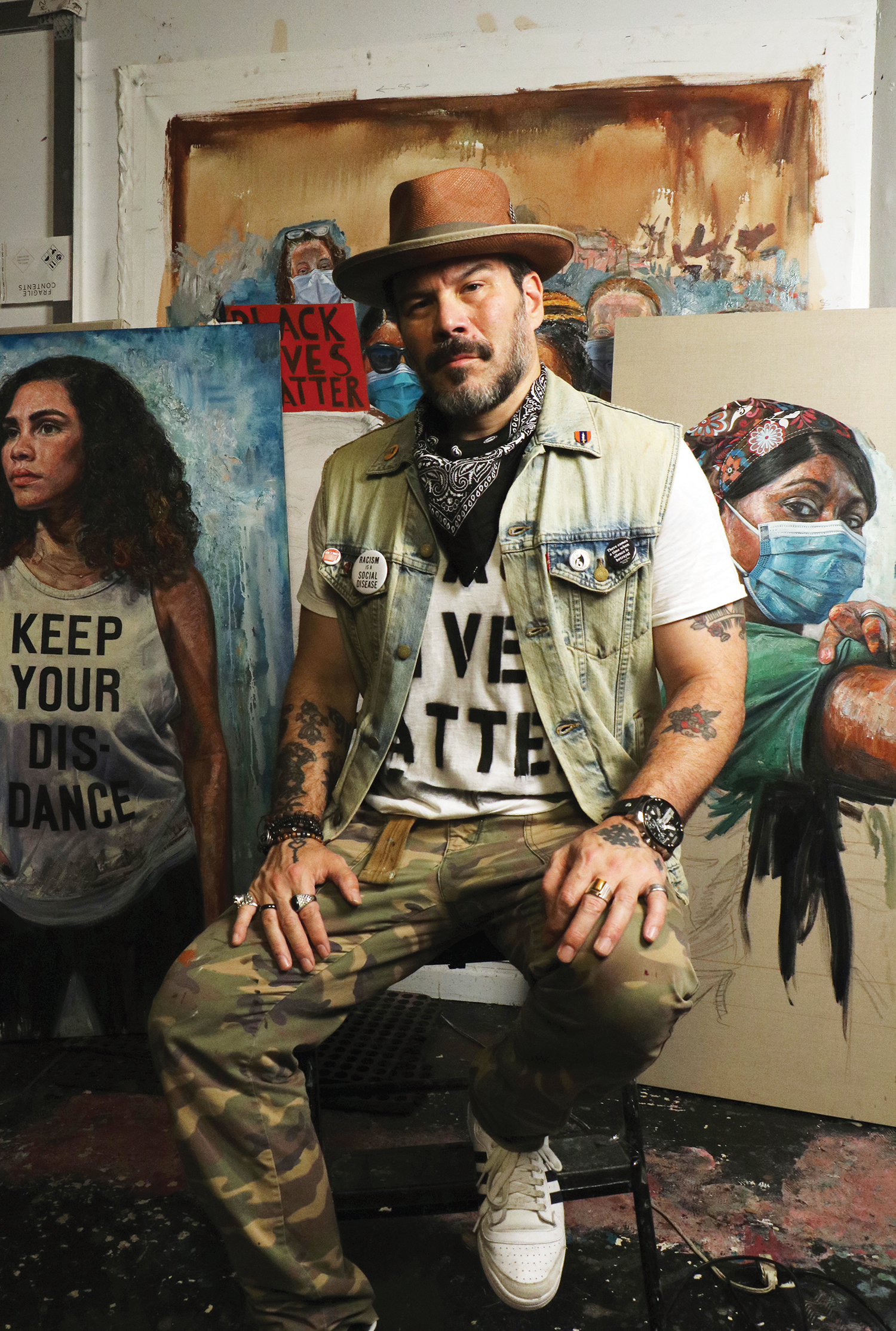For Edmonton-raised portrait artist Tim Okamura, everything changed in March. He got COVID-19. His cousin did too, and passed from it. A good friend killed himself. Another considered it. And from his apartment-isolated view across the street from the Wyckoff Heights Medical Center in Brooklyn, he watched freezer trucks fill with bodies while rats populated the people-free streets.
His shows were cancelled, and sales took a hit. He started having serious conversations with his parents about moving back to Edmonton for the first time in 35 years. “I was in the real heart of darkness,” he says. “What choice did I have?”
Then came the protests, rallies and riots — and hope. “Everything is intertwined,” he says. “The pandemic set the stage for the BLM movement. I don’t think it would have happened in the same way if life was proceeding as normal.”
For Okamura, “normal” is painting portraits of women of colour in a way that few can (prints of his works have been held up at rallies across the United States). But
he felt guilty for not doing more, until he talked with a friend. “He’s a pretty ripped guy, and he goes to all the marches to help keep the peace. He told me, ‘Everybody has a job to do. I’m a street soldier. I can take care of myself and others. Your job is in the studio, making imagery for the movement.’”
The words helped lift Okamura out of darkness, and inspired his new Healthcare Heroes series of nurses in
full PPE, as well as ER doctors from Wyckoff, as a way to grapple with the complexity of their situations. “They’re suffering the most, and they’re doing the most to help. And it’s not just medical staff. Grocery store clerks, sanitation workers, bus drivers — a large proportion are people of colour, and they’re putting their lives on the line.”
Okamura recently reposted a painting he made in 2009. The foreground features a cop tackling a Black man, who’s wearing a shirt that says THE STRUGGLE MUST CONTINUE. Many people thought it was new, which gives Okamura mixed feelings because, while it feels good to have old work be relevant, it means we’re “dealing with the exact same stuff 11 years later.”
